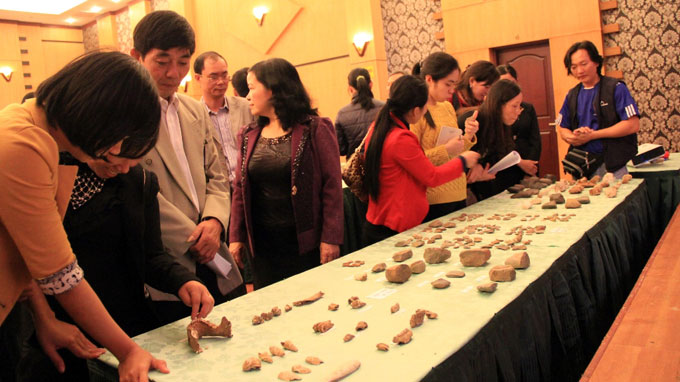The Thanh Hoa Department of Culture, Sports and Tourism recently announced the preliminary result of the excavation at Con Moong and Diem caves in the province. The excavation yields a number of artifacts which speak volumes about ancient Vietnamese daily life and work.
After four field trips, in Nov 2013 the archeologists from the Vietnam Archeology Institute and the Novosibirsk Archeology and Ethnology Institute from the Russia Science Academy excavated a 14m2 hole at Con Moong Cave, located in mountainous district Thach Thanh.
The excavation revealed that the cave measures some 9.5m in depth and comprises of ten different layers. Working tools, including those made of quartz, animal bones and mollusk shells are found at the cave. Graves in which the deceased were buried in the fetus position, which are one of humans’ earliest burial forms, are also discovered there.
The vestiges on the strata of Con Moong Cave recount illuminating stories about the period when ancient Vietnamese people lived in caves and used stone working tools. The artifacts are also indicative of the improvements in the techniques of tool making, climatic changes and the people’s adaptation to the changes.
Meanwhile, Diem Cave, located at Sanh village, some 4km east of Con Moong Cave, is tube-shaped and measures over 50m in length and 10m in width in average. The excavated area is some 200m2 wide and has an almost intact cave entrance.
The cave’s strata, which are 1.4m thick in average, comprise of three layers. Many graves, animal bones, stone and pottery artifacts are found there.
The excavation revealed that Diem Cave was inhabited by ancient Vietnamese people for a long time. It was also where stone working tools were made and graves placed, which indicate changes in the people’s burial forms.


















































